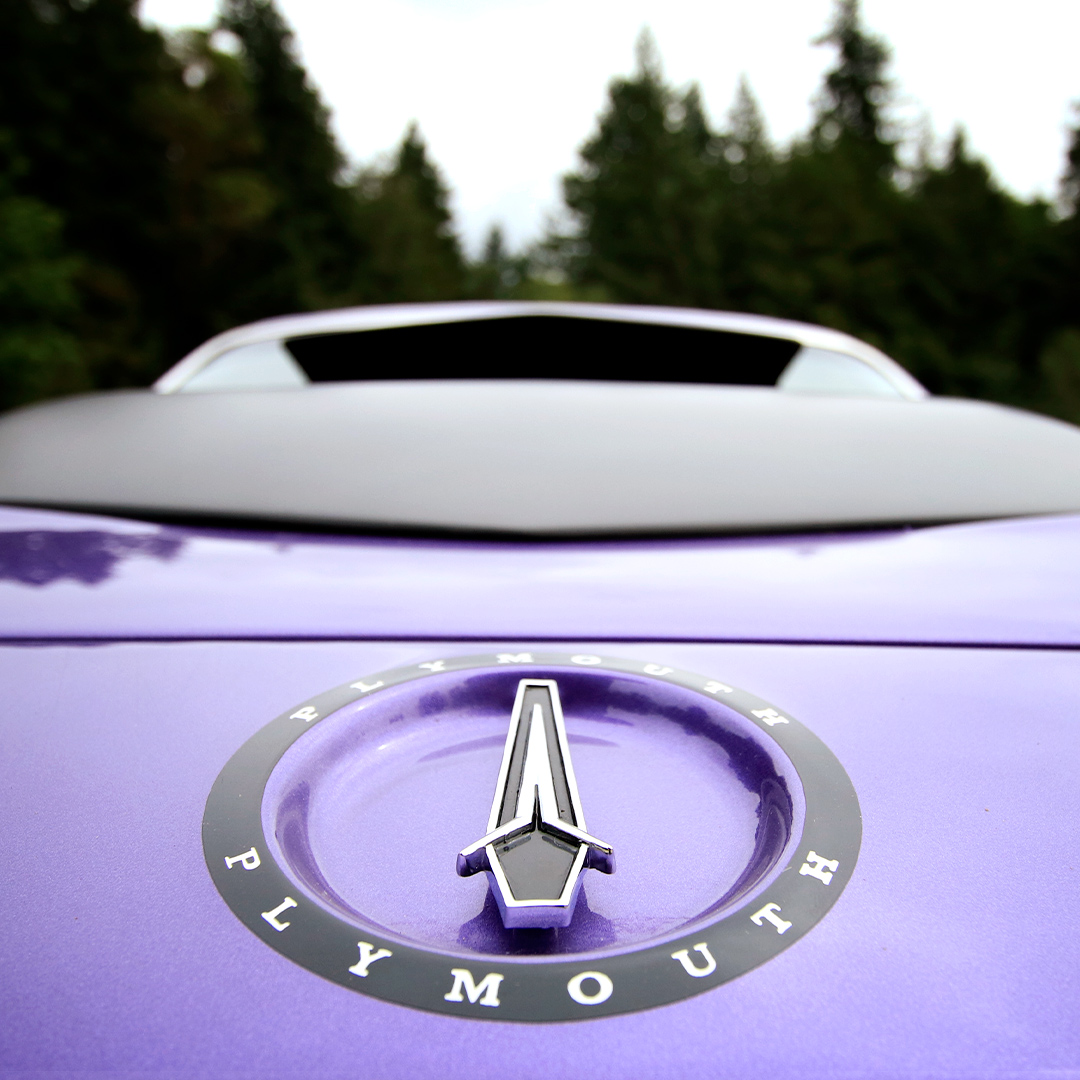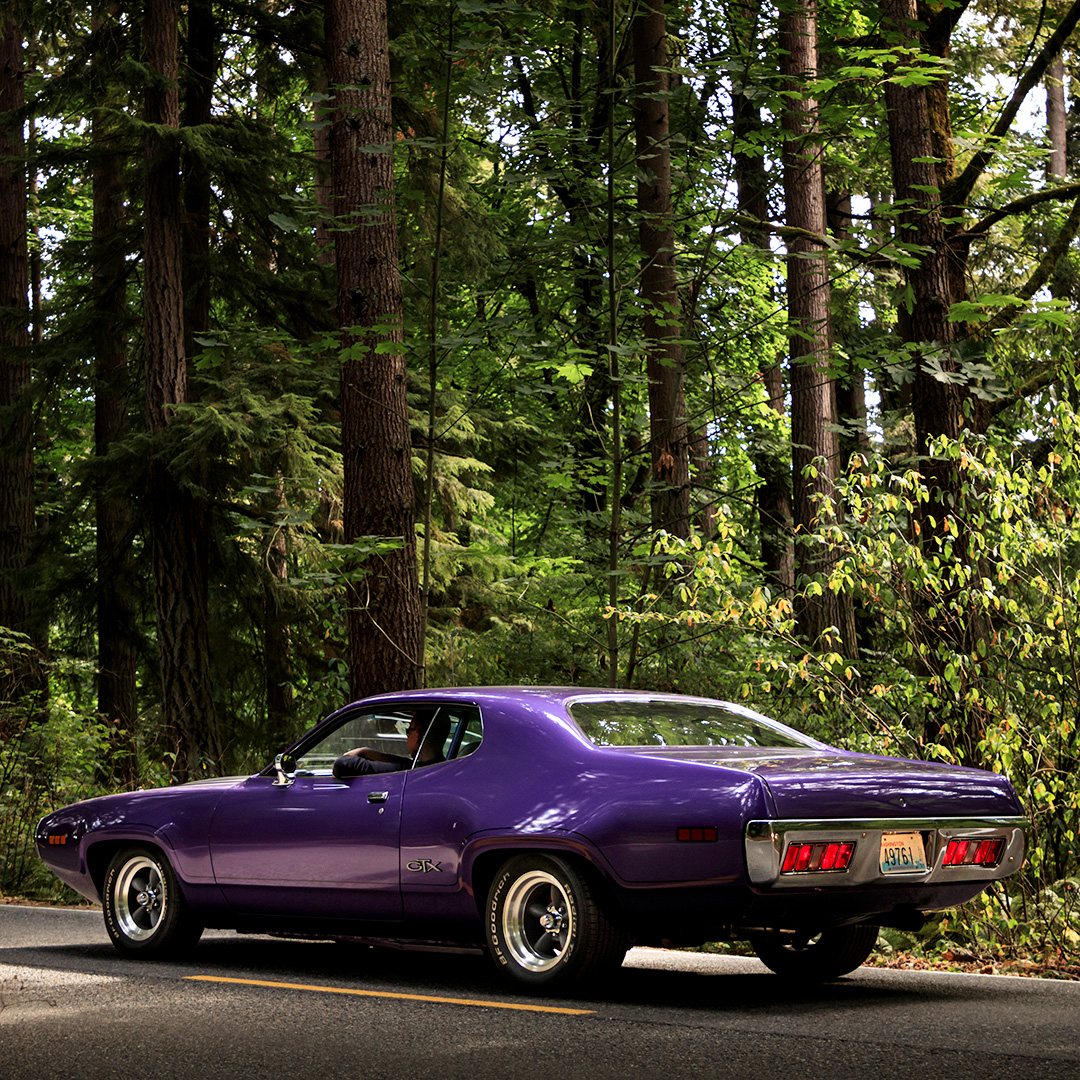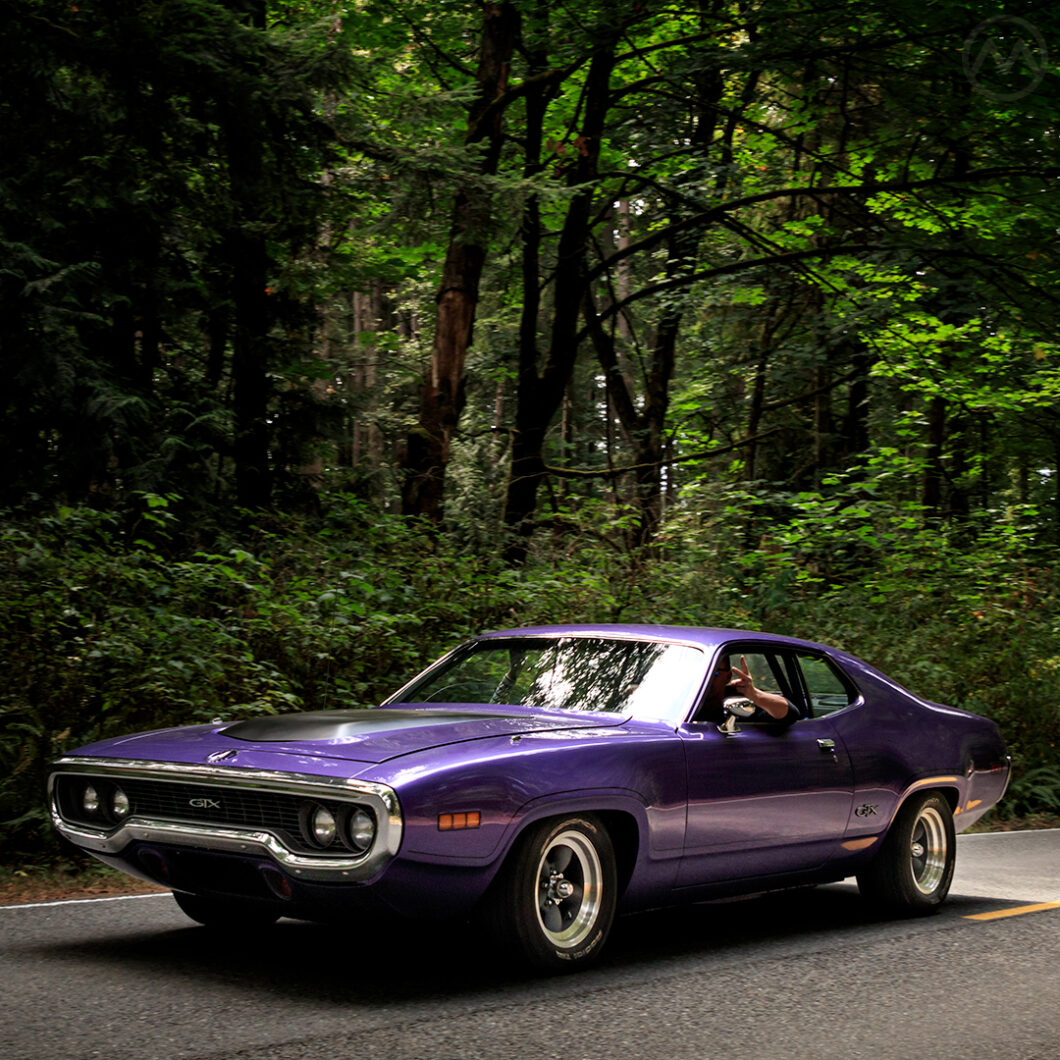The Plymouth GTX lasted just five years as a stand-alone model, and the car was a resounding sales dud, but they were five glorious, bonkers years. The 1971 GTX seen here was the slowest seller of the bunch, but not for lack of character or speed. Its newly-shaped fuselage look shouted performance from the rooftops, and getting places in a hurry was its sole purpose.
The unexpected and phenomenal success of Pontiac’s GTO gave rise to dozens of imitators in the mid-1960s, and the GTX name was a direct riff on the Pontiac, though the formula was different. The ebullient enthusiasm for muscle cars at the time meant an ever-escalating arms race of big blocks and quarter-mile terrors, and Plymouth offered plenty of potent muscle.
By 1966, you could order a Belvedere with the fearsome street hemi, and plenty of wedge-powered drag machines had come before. However, none of Plymouth’s musclebound cars had the pop culture magic of the GTO, and even the Barracuda was closely related to the more humble Valiant. In 1967, Plymouth decided the best thing it could do was to apply the familiar full-size performance car treatment to its midsize offering and top the GTO on power and speed.
Pontiac GTO to Plymouth GTX
The first GTX was the “Belvedere GTX,” a regular Belvedere Satellite hardtop or convertible with a different grill and rear-end treatment, prominent hood scoops, and more chrome throughout. Inside it had bucket seats and a console just like “sporty” cars in the Detroit idiom did in the 1960s, and it came with many of the nicer features of the Belvedere line. The GTX was not subtle, but what counted was what was underneath.
Mechanically, the GTX was like a Howitzer, using only the heaviest artillery in the Plymouth arsenal. It came only with the 375-horse RB-series Super Commando 440 V8 or the optional 426 Street Hemi, mated to the indestructible Torqueflite 727 or a four-speeder as a no-cost option. A sextet of leaf springs were worn on each side at the back, and all the components, shocks, ball joints, torsion bars, etc., were as heavy duty as they came.
The GTX was built to dominate in a straight line. While it earned some praise for being a good handler relative to other muscle cars of the time, anybody who’s driven one of the early GTXs can attest to its wildly over-assisted steering, which was almost free of any real feedback from the road. But that didn’t matter in the stoplight grand prix, where the GTX easily matched or bettered the GTO.

Plymouth billed the GTX, appropriately, as “The Gentleman’s Muscle Car,” a riff perhaps on Buick’s “Banker’s hot rod” but definitely not aimed at the same crowd even though it was quite pricey by Plymouth standards, some $500 to $700 pricier than a Satellite hardtop, and way more with the expensive Hemi. That brutal powerplant never cost less than $540, which was enough to buy any number of pretty decent used cars in the late 1960s.
The GTX was not a big seller and never would be, which is sometimes attributed to its price, although, to be fair, there were other potent muscle cars that were even more expensive, like the Mercury Cyclone Spoiler. It came only with the big engines, which even the peak of muscle cars in 1968 were not for everybody. But it also got a little brother that stole the show that same year.
Already a top-of-the-line type of deal (although the Sport Fury was more expensive), the GTX became an even more upscale car in 1968 with the launch of the cheap-and-cheerful Roadrunner.
The Roadrunner started off with lesser engines than the GTX, but it could be fitted out with mechanical pieces to match its big brother. But by default and design,the Roadrunner came as a stripped-down machine. Thanks to it’s “Beep Beep” horn and licensed cartoon character mascot, the ‘Runner also had the same kind of pop culture resonance than the GTO did and the GTX probably never would.
The new car’s affordability meant it quickly cannibalized sales, but not just because of the price and image. Because it lacked the power accessories of the GTX, the Roadrunner was also faster and it arguably rode better than the rock-hard suspension in the GTX. But Plymouth’s top muscle machine continued, in ever dwindling numbers.
In 1968, with muscle cars at the height of their popularity and the first year without a “Belvedere” relationship, Plymouth moved 18,940 GTXs. Sales dwindled to 15,602 in 1969, just 700 of them convertibles, and then sank to 7,748 in 1970, all of them two-door hardtops as the convertible was dropped.
Fast Fuselages
The formula was still the same, the B-body coupe with the most powerful engines and the heaviest-duty hardware. By 1970 this meant the existing RB 440 and Hemi but also the 440+6, with 385 horsepower. Given the car’s poor sales showing in 1970, it wasn’t entirely clear if it would return in 1971, but it did, and arguably wilder than ever.
For 1971, the B-body midsizes were completely redesigned, and at Plymouth, that meant the coupes were split off from the sedans and wagons. This was a direct result of the public’s interest in muscle cars during the time this design was being created.
Two-door models, management reasoned, would sell even better and one-up GM’s hardtop coupe designs if they had their own unique styling and didn’t have to compromise on design points intended for family cars. The two-door models shared much with the four-door ones ahead of the A-pillar but great pains were taken to make them look unique.
The 1971 B-cars were actually intended for 1970, but according to product planner Gene Weiss, the disappointing sales of the full-size 1969 Fuselage cars led the corporation to push back the timeline by a few months.

The beautiful new body was created by a team led by John Herlitz, also responsible for the 1970 Barracuda, working under Dick Macadam. Herlitz’s soft, organic forms were a direct rejection of the rectilinear shapes Chrysler had loved just a couple of years before and it’s hard to find any significant straight lines anywhere.
It looked muscular even at rest and the 1971 edition was probably the most extroverted of all the GTXs. By now the cars also came in a variety of wild colors that had debuted earlier, including “In Violet,” (Code FC7, also known as “Plum Crazy” over at the Dodge Dealer). The Roadrunner was still far more popular but the production numbers tell the larger tale of such supercars truly expiring with buyers in 1971, as the shift to personal/luxury was already underway.
Exit, Stage Left
Just 2,942 1971 GTXs were made, and only 30 of them were equipped with the Hemi as the market simply dried up for such cars. The writing had been on the wall a year earlier when the wild Roadrunner Superbird, now a treasured classic, went wanting for buyers, and with that, the GTX’s days a stand-alone model came to a inglorious if colorful end. For 1972 the “GTX” became an option package on 440-powered Roadrunners, and lasted into 1974.
As this design matured, Plymouth layered personal/luxury bits onto it, most notably in the form of the Satellite Sebring and Satellite Sundance, but even then, it was always a muscle machine at heart. In 1972, Richard Roundtree drove a sporty-looking two-tone Satellite Sebring in Shaft’s Big Score, and it looked as properly badass as this GTX.
We spied this 1971 Plymouth GTX in 2021.

